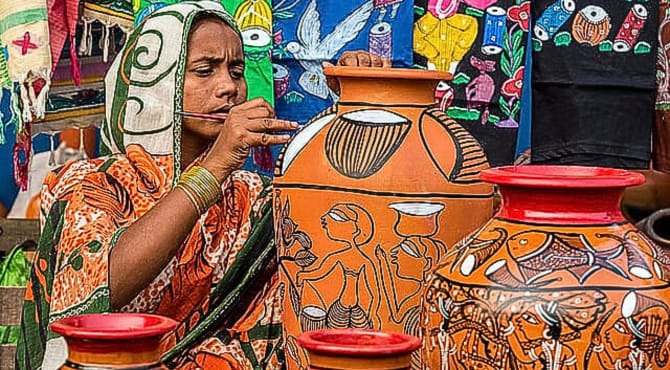The GST Bachat Utsav, a festival of tax relief, opened its curtains on September 22, 2025, and is a landmark reform of the Modi government, which not only simplified the taxation system in India but also helped the country to grow economically and maintain the cultural side of it.
As the major components of the next-generation GST reforms, the government has slashed the rates significantly for the handicraft sector. The decrease in the costs of craft goods has lifted a three-sided people of artisans, traders, and consumers. Thus rural livelihoods have been directly supported, and India’s cultural economy has been consolidated.
The new GST 2.0 reforms have led to a reduction in taxes on numerous handicraft products by bringing the rates down from 12 percent to 5 percent. This situation covers a pretty diversified set of products ranging from wooden, earthen, and metal figures of gods to paintings, from handcrafted candles to wood-carved products and from terracotta kitchenware to cotton and jute handbags as well as shopping bags. These kinds of cuts in the costs of the products have made them more affordable and so the consumers’ accessibility has become wider and at the same time the market reach of the artisans is higher.
The changes in the GST system had such a positive impact on the handicrafts that they led the traditional artisans and small traders, who are mostly the inhabitants of the rural areas where handicrafts are the major source of income, to rise again.
For instance, the tax cuts have made the handloom and handicraft industries in states like Assam, West Bengal, and Himachal Pradesh—the states that are famous for their textiles, terracotta crafts, jute products, and woodwork, respectively—more competitive. Just in Assam, the reforms are targeting over 12.83 lakh weavers and 12.46 lakh looms and thus are opening the way to the market that is broader and income higher for artisans, especially the women weavers who are engaged in heritage silk and handloom clusters.
The lowered GST rates are aimed at providing long-term help for the survival of age-old craft traditions especially by pricing traditional, eco-friendly products in a way that they can easily compete with their mass-produced and synthetic counterparts. This approach not only supports cultural heritage but also helps the environment, for example, by creating a vogue for jute handbags against plastic ones. By stepping up the need for genuine handicrafts, the authorities enable the continuation of the cultural legacy through which they simultaneously create a fresh set of rural and semi-urban entrepreneurship avenues.
The expected impact of the GST simplifies under the GST Bachat Utsav on the worldwide competition of Indian handicrafts—next to the domestic market—is another dimension of the story, and the most prominent one at that. The discounted prices serve to increase the local demand in the long run, which in turn is favorable to the competition of handicraft articles with factory-made ones. The expansion of this market is vital for the rural economy to flourish and for the creation of jobs to take place in the handicraft sector which millions are dependent on, at the same time that the growth is inclusive.
The rate cuts on GST for the handicraft industry is a clear example of how the Modi government is using a policy to achieve three goals simultaneously, namely, to empower the artisans, perpetuate India’s culturally rich heritage, and stimulate the rural economies. By putting less tax burden on 12 percent to 5 percent, the various handcrafted goods reforms have made traditional handicrafts more affordable and competitive, both domestically and internationally.
This project not only resists the culture of the people’s lives, but it also makes India’s cultural economy part of the broader national growth story, thereby ensuring that the old crafts would survive in the face of the present-day economic challenges and even thrive.









